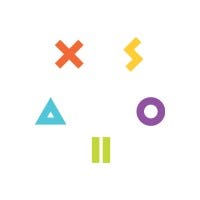The Marketing Behind Hardware Bundles
As the Black Friday/Cyber Monday sales events are going on, today's post looks at the marketing and decision making behind bundling hardware and software together.

By the time you read this, the craziness of Black Friday will be in full effect as retail, online and digital stores are running their best sales for the year. One of the big pulls of the Black Friday/Cyber Monday sales period is that it's one of the few times where we see sales on hardware like consoles and handhelds.

And one of the most popular sales tactics is the use of bundling hardware and software together. While it may seem like a simple act, there is a lot of thought that goes into these combinations and today's subject.
Bundling:
Bundle promotions are obviously the act of selling multiple items at the same time. The idea is that you're spending more money, but you're getting each individual item cheaper than what they would have been separate.
For the Game Industry, hardware bundles have a secondary purpose -- To create an attractive package for specific consumers. Everyone knows that you can't just buy a new console or handheld, you need titles to go with it and if a bundle comes with games that you were already going to buy, then it's like icing on a cake.
And this is where the marketing strategy comes into play with creating attractive bundles for your specific consumer bases and we see different bundle types from stores.
Family Edition:
The family edition bundle is aimed for families or children. It will include the system and games that are either targeted at children or those that a family can enjoy with local multiplayer.
For game consoles that have different versions, these bundles will usually be limited in some way such as the difference between the 8 GB and 32 GB versions of the Wii-U or the Xbox 360 that didn't come with a hard drive. The point is presenting the product at its absolute cheapest to be as attractive to a family on a budget. These bundles are not for hardcore or older audiences who want all the features that come with the console.
Other bundles are usually designed for older audiences and come in several varieties.
The "Best of" Edition:
This bundle includes the top games of that console and depending on the platform itself, may have several variations based on the platform's line-up.
 Best Buy's Wii-U bundle combined some of the most popular games from the Wii-U's library.
Best Buy's Wii-U bundle combined some of the most popular games from the Wii-U's library.
With some Xbox One promotions, we've seen some that come with Assassin's Creed Unity and some that had the Halo Master Chief Collection.
The point is to offer options that are both popular and have games that will appeal to different markets. This is why the two Xbox One bundles were aimed either at single player fans or multiplayer. For these bundles, they will usually be the best version of the console as you're trying to appeal to the hardcore fans that haven't yet purchased the hardware.
The final bundle is unusual as it's not normally tied to Black Friday/Cyber Monday, but it is one that console makers like to use.
Big Name Release Bundles:
When we talked about the windows of game releases, we mentioned that big names from the AAA market tend to come out in September through November to capitalize on the pre-holiday sales. Another way that console makers like to sweeten the deal is when they know they have a big hit on their hands and offer a limited time bundle packed with a new game.
We see this yearly with the Call of Duty editions of a Microsoft console. These bundles have different rules compared to the other ones. The allure of these is twofold: One is you're getting the game that you want with the purchase of the hardware so that you're killing two birds with one stone.
 Bundles are all about being a specific theme or brand, or attracting a specific consumer type.
Bundles are all about being a specific theme or brand, or attracting a specific consumer type.
But the other point is that you're getting something limited and unique. Whenever console makers bundle AAA games and consoles together like this, they tend to change the paint on the system and controllers to symbolize that you're getting a special edition of the console.
Whereas other bundles will try to save you money on either the games, hardware or both, these bundles usually cost more than the individual parts and instead it's more about the collector's quality of the package rather than the price.
Because of that, you won't see these types of bundles for every major game release and they're usually saved for the biggest and most popular games. Another reason is the fact that the console maker has to create a different model which takes time and money and these are normally planned months in advance.
Bundle Up:
Indie and non hardware developers can make use of bundling as well. It's important to remember that you want to bundle titles together that fit with either a specific consumer mindset or to a specific brand. For more examples of bundling for software, you can check out the weekly Humble Bundles and examine what titles they put together.
A good bundle is just like any other sales tactic and if done correctly will provide a win-win for developer and consumer alike.
(Reprinted from the Xsolla.com Blog)
Read more about:
BlogsAbout the Author(s)
You May Also Like













